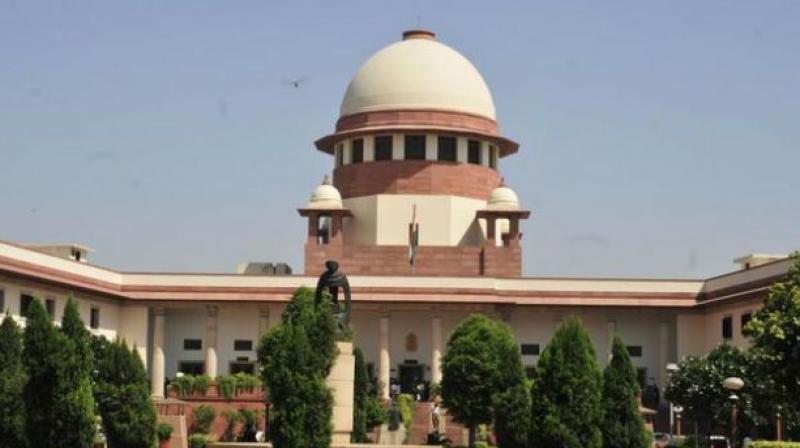judicial activism is a concept that originated in the United States in 1947. It has been seen in India since the days of the Emergency.
Judicial Activism in India
The judiciary plays an important role in upholding and promoting the rights of citizens in a country. The active role of the judiciary in upholding the rights of citizens and safeguard the constitutional and legal system of the country is known as judicial activism. This entails, sometimes stepping into the executive territory. beyond the limits of justice is an exaggerated version of judicial activism.

Judicial activism is seen as a success in the liberalization of access to justice and provides assistance to disadvantaged groups.
The concept of Public Interest Litigation (PIL) always made when judicial activism discussed.
Methods of Judicial Activism
There are various methods of judicial activism that followed in India :
- Judicial Review: This is the power of the judiciary to interpret the Constitution. It can declare a law or orders of the executive and legislative void if it affects the constitution
- People’s PIL- submission must not have any personal interest in the litigation. This petition was accepted by the court only if there is a substantial public interest is involved. The injured party does not apply.
- Interpretation of the constitution
- Access international law to guarantee the constitutional rights
- The strength of higher court supervision in a lower pitch
Significance of Judicial Activism
It is an effective tool to enforce the rights of citizens and applying constitutional principles. This occurs when the executive and the legislature failed to do so.
Citizens have the judiciary as the last hope to protect their rights when all other doors were closed. Indian judiciary has been regarded as a guardian and protector of the Constitution of India.
There is a provision in the constitution itself to the judiciary to adopt a proactive role. Article 13 is read with Articles 32 and 226 of the Constitution. In fact, It delivers the power of Judicial review to a higher court to declare any executive, legislative, or administrative act void if it conflicts with the Constitution.
Judicial activism counters the notion that the courts are mere spectators.
Examples of judicial activism
It all began when the Supreme Court of Allahabad rejected the candidacy of Indira Gandhi for the parliament election in 1973.
In 1979, the Supreme Court of India ruled that undertrials in Bihar had already served time for longer than they would if they had been convicted.
Golaknath case: The question, in this case, was whether the amendment is a law. And if the fundamental rights can be modified or not. SC passed that fundamental rights are not susceptible to the Parliamentary restriction as indicated in Article 13. To modify the fundamental rights they would require a new Constituent Assembly. He also stated that Article 368 gives the procedure for amending the Constitution. But does not give Parliament the power to amend the Constitution.
Kesavananda Bharati case: This statement defines the basic structure of the Constitution. The Supreme Court held that its not part of the Constitution. It includes the fundamental rights that were beyond the power of Parliament to be modified. The “basic structure of the Constitution could not be abrogated even by a constitutional amendment.” This is based on the law of India in which the judiciary can reject any amendment adopted by Parliament that conflicts with the basic structure of the Constitution.

In the 2G scam, the SC canceled 122 telecom licenses and spectrum allocated to telecommunications. It arguing that the allocation processes were flawed.
The Supreme Court launched a general ban on firecrackers in Delhi – NCR area with certain exceptions in 2018.
Applicants should read about historical cases related to the basic structure of the Constitution, in the linked article.
Advantages and Disadvantages of judicial activism
judicial activism means in simple words when judges interrupt their own personal feelings in a conviction or sentence. For some reason, every court case has a base of activism within it. It is essential to weigh the pros and cons to determine the suitability of the course of action that takes place.
Advantages of judicial activism in India
judicial activism establishes a system of checks and balances to the other branches of government.
- Innovation needed is accentuated by way of a solution.
- In cases where the law does not establish a balance, judicial activism allows judges to use their personal judgment.
- The confidence placed in judges and provides an overview of the problems. The oath to do justice to the country by the judges does not change with judicial activism.
- It only allows judges to do whatever they want within the limits rationalized. Therefore showing instilled confidence placed in the justice system and its judgments.
- judicial activism helps the judiciary to keep a check on the misuse of power by the state government which interferes and harms residents.
- On the subject of most, it helps you solve problems in a hurry when the legislature gets stuck in decision-making.
Disadvantages of judicial activism in India
- First, when you are stopping power and misuse or abuse of power by the government is exceeded. It limits the operation of the government.
- limit the power set to be exercised by the Constitution is clearly violated when canceling any existing legislation.
- Judicial opinions of judges, once taken for any case becomes the standard to rule out other cases.
- Judicial activism can harm the general public as the trial may be influenced by personal or selfish motives.
- Repeated court interventions can reduce people’s faith in the integrity, quality, and efficiency of the government.
Judicial Activism Criticism
Judicial activism has also faced criticism sometimes. In the name of judicial activism, the judiciary often mixed prejudices and opinions with the personal law. Another criticism is that the theory of separation of powers between the three branches of the state will give a draw with judicial activism. Often, the judiciary, in the name of activism, interferes with the administrative and judicial domain is one adventure/overreaching. In many cases, there is no fundamental rights of any group are involved.
Judicial activism VS judicial restraint
As mentioned above, judicial activism is the role of the judiciary to protect the legal and constitutional rights of citizens. Judiciary exercises its own power to implement or down laws and rules that violate the right of citizens. It also acts for the good of society in general.
While on the other hand, Judicial Restraint is the second side of the coin. It encourages the judiciary to respect the law or rules established by the Constitution.
The judiciary has expanded its power through judicial activism, allowing judges to initiate cases suo-moto whenever constitutional laws seem violated. However, under judicial restraint, the judiciary must respect the executive’s exclusive authority to create laws for the public. Therefore, a balance between activism and restraint is necessary to uphold both judicial independence and legislative authority.
The way forward in judicial activism
Judicial activism is a product manufactured exclusively by judiciaries and is not supported by the Constitution. When the judiciary line exceeds the established powers to sign on behalf of judicial activism, then begins to invalidate the concept of separation of powers established in the Constitution.
If judges are free to decide and make laws of your options, it not only goes against the principle of separation of powers. It will also result in chaos and uncertainty in the law as all judges begin to write their own laws according to their will.

court exercise has to be respected to maintain a clear balance.
Making laws is the role and duty of the legislature to fill the void of the laws and apply them appropriately. So the only work left for the judiciary is interpretations. Only a fine balance between these governing bodies can sustain constitutional values.
Read more
- Trusted Legal Solutions for Multinational Companies in Chennai
- Best International Law Firm in Chennai for Global Clients
- Anticipatory Bail: Supreme Court Interpretations and Key Case Laws
- Judicial Separation: How To Resolve Family Disputes you Need to See?
- Constitutional Law Attorneys: How to find the Best in Chennai?
- CONSTITUTIONAL TORT: How to find the Best Legal services in Chennai?
- HC orders to restore the Police
- How India Is Changing The Way You Think About Law?

